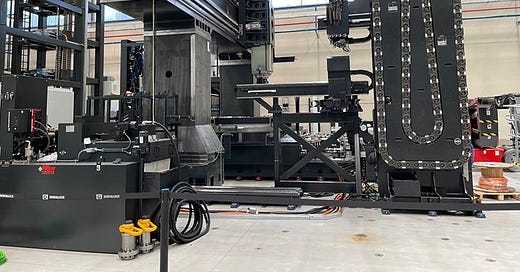The Technical Revolution in Large-Part Machining: Harnessing Vibration Control
The Deep Impact of Chatter Control Technologies on Machining Processes
The manufacturing world is on the cusp of a technical revolution with the introduction of advanced vibration control in large-part machining. These newly patented technologies, akin to noise-cancellation in headphones, are not just incremental improvements; they represent a paradigm shift in machining dynamics. Let's dive into the deeper technical impacts and opportunities they present. 🛠️
Understanding the Vibration Challenge
Vibration and chatter have long been the Achilles' heel in machining, especially in operations involving large, complex parts. These phenomena lead to issues like poor surface finish, reduced tool life, and even machine wear and tear. The technical essence of the new vibration control technologies lies in their ability to counteract these vibrations, not just dampen them.
In-Depth Analysis of Dynamic Active Stabilizer (DAS)
Vibration Cancellation at Source: DAS employs electromagnetic actuators at critical points on the machine, such as the spindle or the ram. These actuators detect and analyze the vibrational frequencies and then emit counter-vibrations. This active response cancels out the primary vibration, much like active noise cancellation technology.
Enhanced Tool Performance and Lifespan: By mitigating the root cause of chatter, DAS significantly extends tool life. Tools can now maintain their cutting edge and precision for longer durations, reducing the frequency of replacements and downtime.
Improved Surface Finish and Tolerances: The stabilization offered by DAS allows for finer finishes and tighter tolerances. This is particularly crucial in industries where precision is paramount, such as aerospace and automotive sectors.
Exploring Dynamic Workpiece Stabilization (DWS)
Stabilizing Thin and Flexible Parts: DWS is groundbreaking for machining operations on parts that are prone to flexing or vibrating under cutting forces. This system attaches to the workpiece, employing a combination of magnetic or vacuum systems to stabilize it during the machining process.
Expanding Machinable Materials and Geometries: With DWS, machinists can now confidently work with a broader range of materials and part geometries that were previously challenging due to vibration issues. This opens up new avenues in design and manufacturing possibilities.
Strategic Implications for Machinists and Manufacturers
Rethinking Machining Strategies: With these technologies, manufacturers need to re-evaluate their existing machining strategies. It's an opportunity to increase cutting speeds, feeds, and depth of cut while maintaining or even improving quality.
Adapting to New Capabilities: The integration of these systems necessitates a shift in operational approach. Machinists and engineers must be trained to understand and effectively utilize these technologies to fully harness their benefits.
Conclusion: A New Frontier in Machining
As we embrace these technologies, we're not just addressing long-standing challenges in large-part machining. We are stepping into a new frontier of manufacturing possibilities. These advancements empower us to push the limits of what's achievable, setting new benchmarks in precision, efficiency, and innovation.
Embrace the change, and let's redefine the future of machining together.
Signing off with a thought: How will you leverage these groundbreaking technologies to elevate your machining capabilities to the next level?




